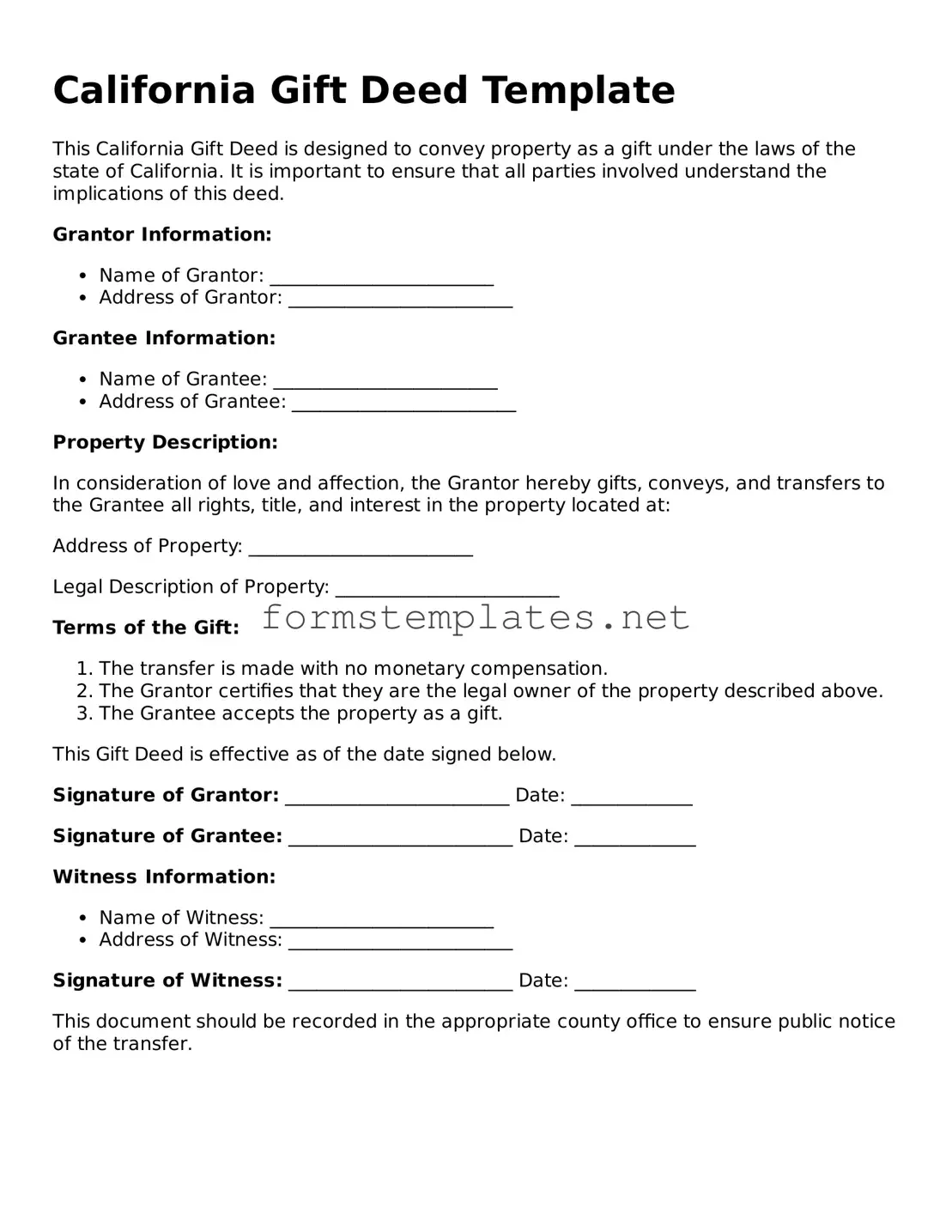California Gift Deed Template
This California Gift Deed is designed to convey property as a gift under the laws of the state of California. It is important to ensure that all parties involved understand the implications of this deed.
Grantor Information:
- Name of Grantor: ________________________
- Address of Grantor: ________________________
Grantee Information:
- Name of Grantee: ________________________
- Address of Grantee: ________________________
Property Description:
In consideration of love and affection, the Grantor hereby gifts, conveys, and transfers to the Grantee all rights, title, and interest in the property located at:
Address of Property: ________________________
Legal Description of Property: ________________________
Terms of the Gift:
- The transfer is made with no monetary compensation.
- The Grantor certifies that they are the legal owner of the property described above.
- The Grantee accepts the property as a gift.
This Gift Deed is effective as of the date signed below.
Signature of Grantor: ________________________ Date: _____________
Signature of Grantee: ________________________ Date: _____________
Witness Information:
- Name of Witness: ________________________
- Address of Witness: ________________________
Signature of Witness: ________________________ Date: _____________
This document should be recorded in the appropriate county office to ensure public notice of the transfer.
